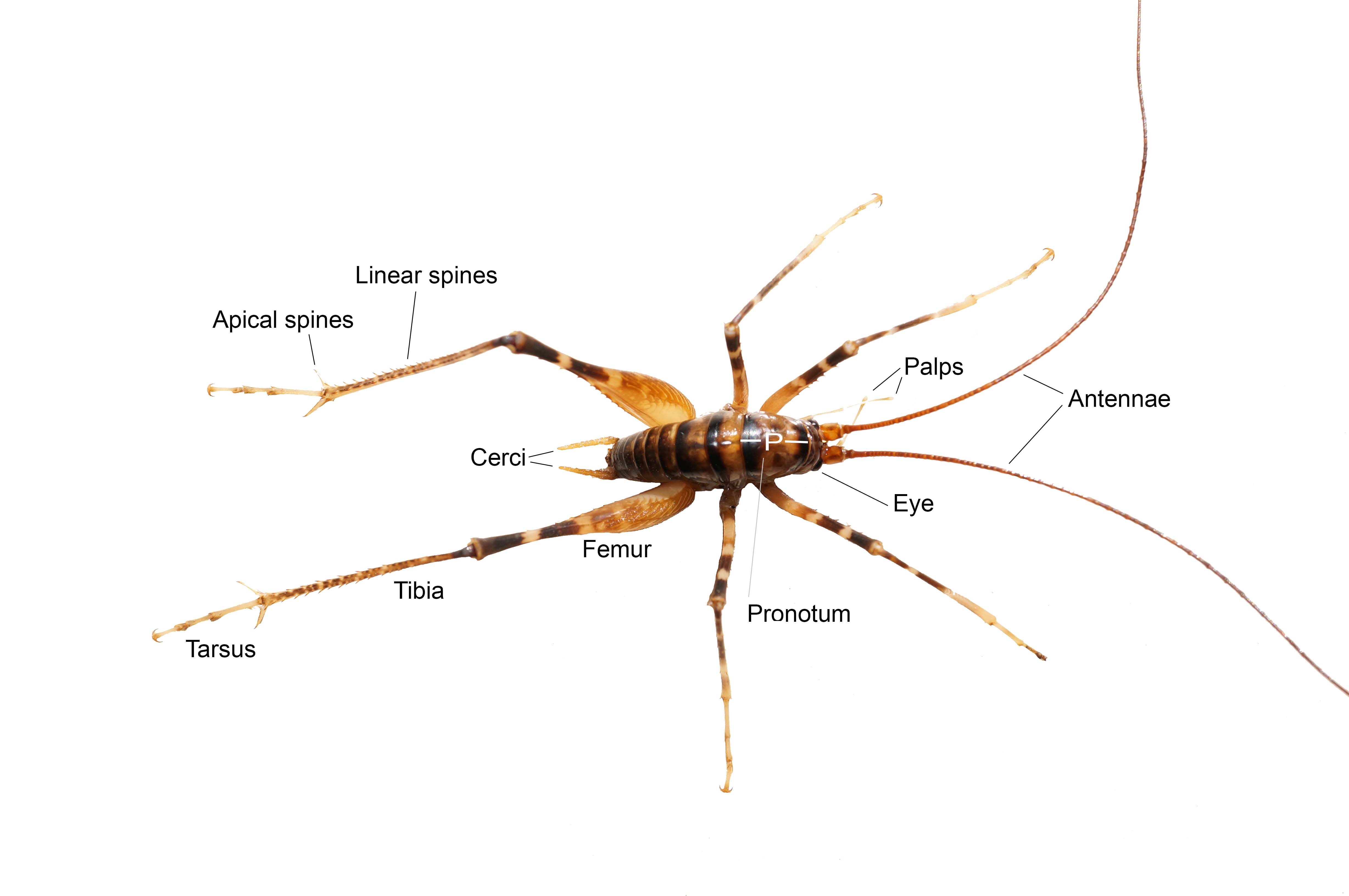 Cave weta come in a wide range of sizes, but all start out life just a few millimtres long. It is important to determine whether you are looking at a the adult of a small species or a juvenile (young) of a large species. This is because young cave weta of different species and even genera are extremely difficult to distinguish. Many of the body parts used by experts for identify species change as the animal grows. Cave weta come in a wide range of sizes, but all start out life just a few millimtres long. It is important to determine whether you are looking at a the adult of a small species or a juvenile (young) of a large species. This is because young cave weta of different species and even genera are extremely difficult to distinguish. Many of the body parts used by experts for identify species change as the animal grows.
Adult females (usually) have long, sharply pointed, pigmented ovipositors. These sword-like structures are inserted into soil and soft wood to lay eggs.
Adult males have long cerci, and usually pigmented subgenital structures.
Size will not be useful for determining whether your weta is adult because adults of some species have bodies less then 1 cm long (and combined hind tibia and hind femur 1.5-2 cm).

WetaGeta is developing identification keys using male and female reproductive structures combined with apical leg spines but this work is not finished. Currently there is not reliable key for cave weta, mostly because we have yet to clarify how many species there are.
Meanwhile try these two methods:
1) Up-load a photograph with data to the WetaGeta project via Naturewatch (go here). If you are interested in sending specimens for identification, fill in and submit the contact form.
2)
Use location, adult size and habitat details to focus your search of images, maps and information to a subset of genera on this website.
3) For a guide to using leg spines for genera go here.
These are images of of adult male cave weta at approximately the same scale (bar is 1cm) |

